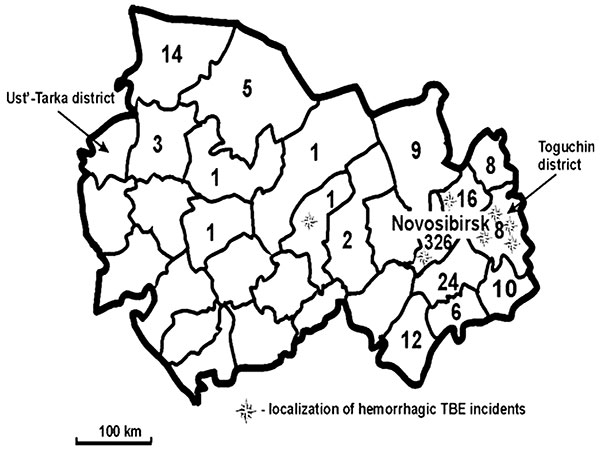Volume 9, Number 6—June 2003
Dispatch
Tick-Borne Encephalitis with Hemorrhagic Syndrome, Novosibirsk Region, Russia, 1999
Figure 1

Figure 1. Distribution map of tick-borne encephalitis (TBE) cases by district, Novosibirsk Region, Russia, summer 1999. Case-patients were defined as persons who died from May 1 to August 15, 1999, and who had serologically confirmed (immunoglobulin M–positive test) tick-borne encephalitis infection.
Page created: December 22, 2010
Page updated: December 22, 2010
Page reviewed: December 22, 2010
The conclusions, findings, and opinions expressed by authors contributing to this journal do not necessarily reflect the official position of the U.S. Department of Health and Human Services, the Public Health Service, the Centers for Disease Control and Prevention, or the authors' affiliated institutions. Use of trade names is for identification only and does not imply endorsement by any of the groups named above.